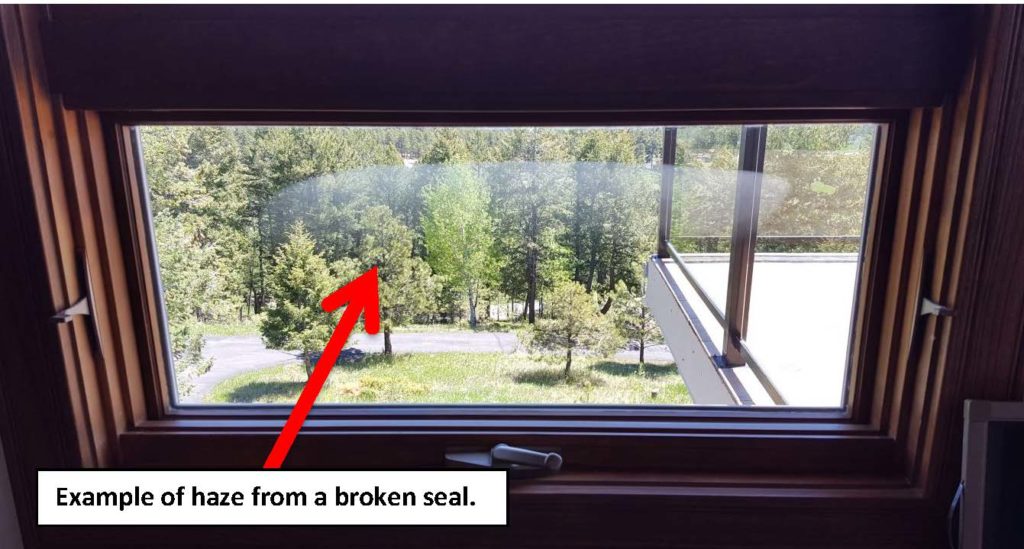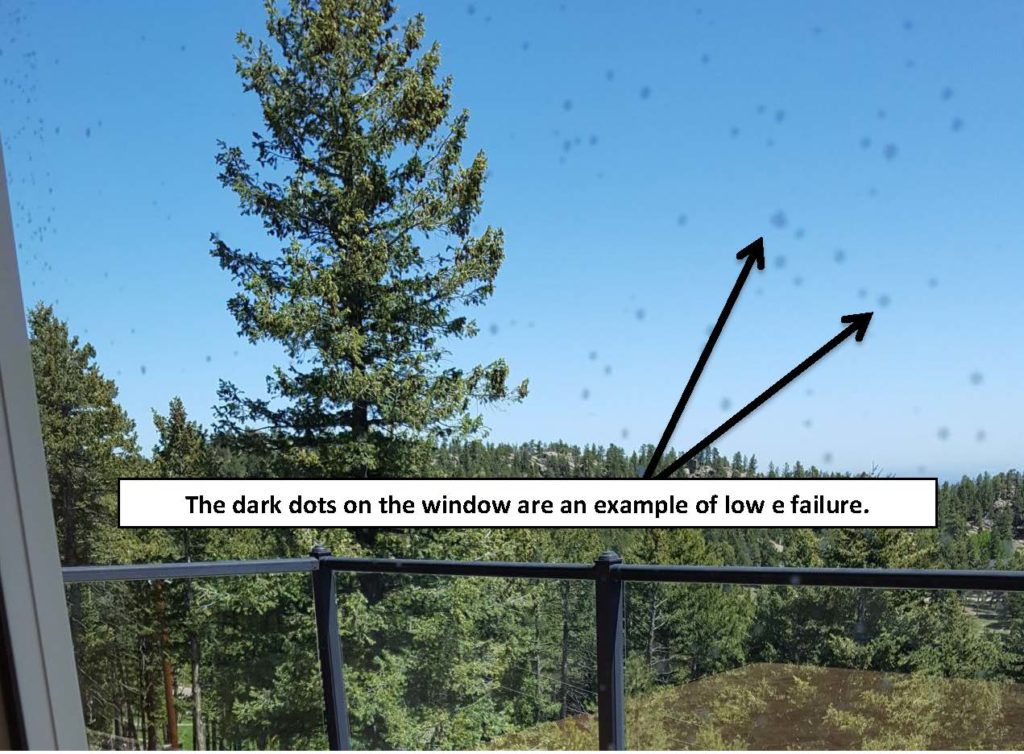The window cleaner has finished the job and the glass still looks foggy, hazy, has drip marks or even water still on the glass. Terrible work? More likely a broken seal. Most all homes have thermopane windows. Thermopanes have two pieces of glass sandwiched together by a spacer that is usually 1/2” to ¾” thick. This spacer adheres the two pieces together and contains small beads of desiccant. The desiccants job is to prevent the buildup of moisture in between the panes of glass. When the seal “breaks” moisture is allowed to enter the space between the glass and starts to become a visual issue.
Different degrees of failure are easy to spot. A window with a light fog around the edges has just begun to go, but could equally stay the same or get worse. Bad examples can be full blown rain storms in between the panes! If the humidity levels can’t be kept at some sort of equilibrium between the interior and exterior of the home, condensation will form in the thermopane. This is why on a cold wet day things might look worse. The symptoms might not even be apparent on a sunny 70 degree day.
I observe these conditions in about 98% of the homes I do, so you are not alone. I have also noticed that most all window manufacturers have this problem. I strongly suspect that it has to do with our altitude. Windows that are built and sealed together at a much lower altitude have a lot of atmospheric pressure changes to deal with when heading ‘up the hill’. Some are built with small capillary tubes to deal with this. If they are not properly crimped when installed, it is an easy point for air intrusion.
Some windows seem to be more prone to failure than others. Large panes of glass that have site built frames are usually the worst. Add lots of sunlight or exposure to wind and the risk expands significantly. Odd shaped widows are also problematic. However, sliding glass doors seem to be immune to the broken seal. The one thing that will kill a window faster than anything is tint. Window films will not allow heat to pass through the glass. It is like taping a lid on a boiling pot of water, something has to give.
So what are your options? The problem is visual more than anything. Unless there is a huge amount of water in between, the damage is not bad. It may be ugly to look out but really shouldn’t cause much, if any, harm. Glass has an insulating value between R-2 and R-6 so no great losses in that area. A few companies offer in place repairs which usually involve drilling a few holes in the glass to “let off some steam”. I’ve seen some improvements with this method. If you have real bad mineral deposits or drips, skip this route. Really all that can be done to fix the problem is replacing the glass. More often than not, just the glass can be replaced. Not having the frame or the whole window assembly can bring the price of replacement back down to earth. The choice is yours, but it is really just visual.